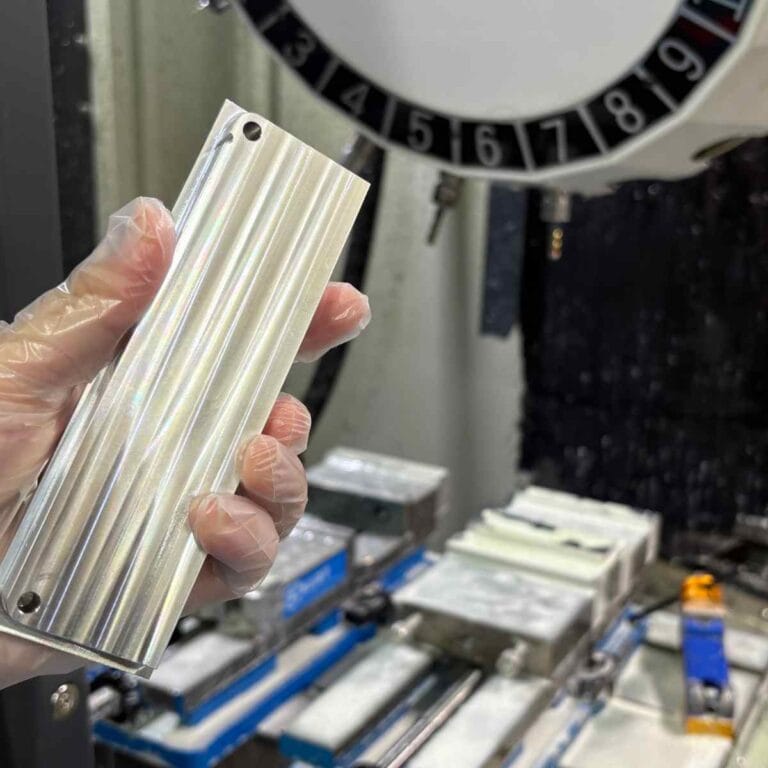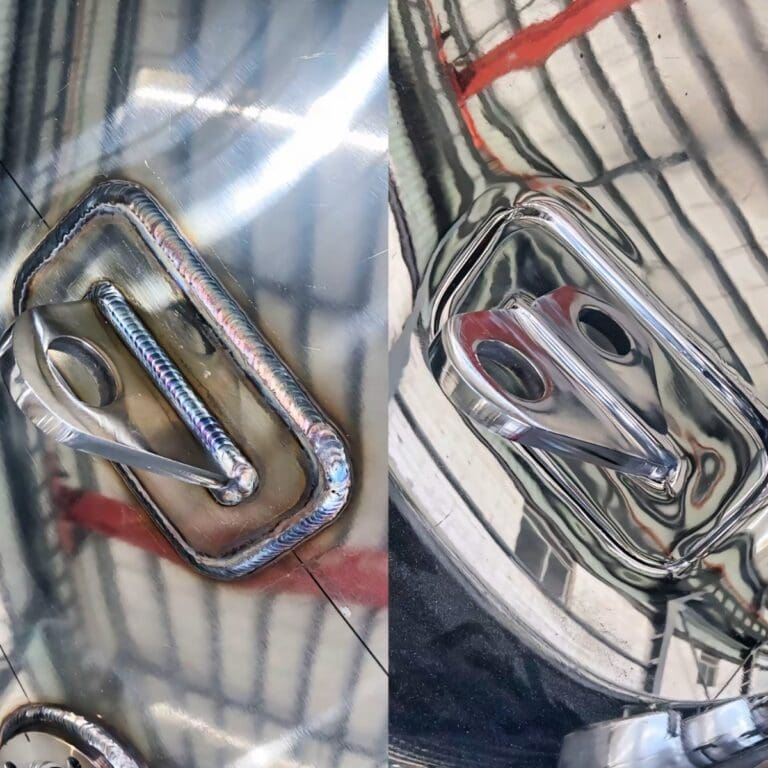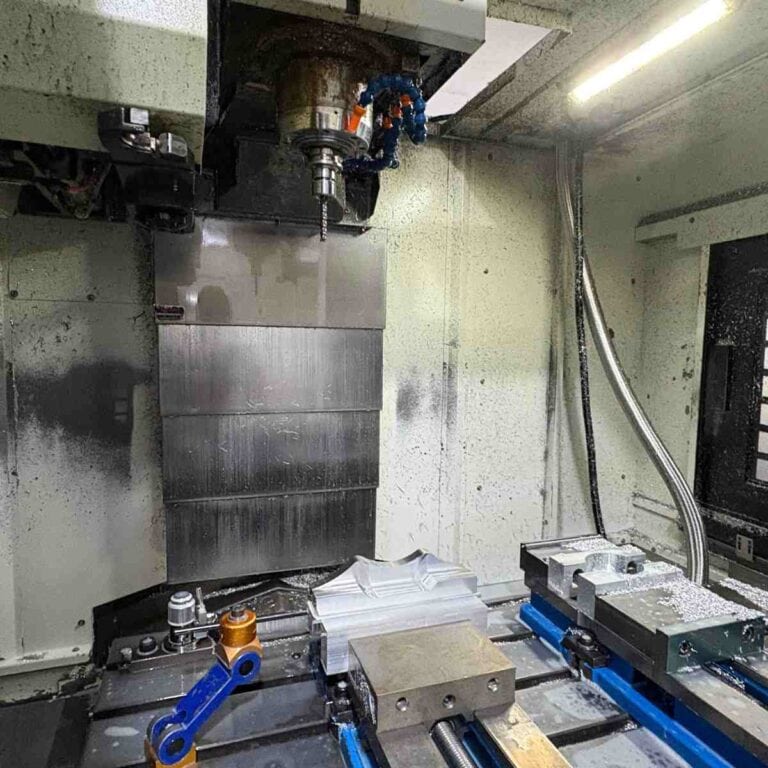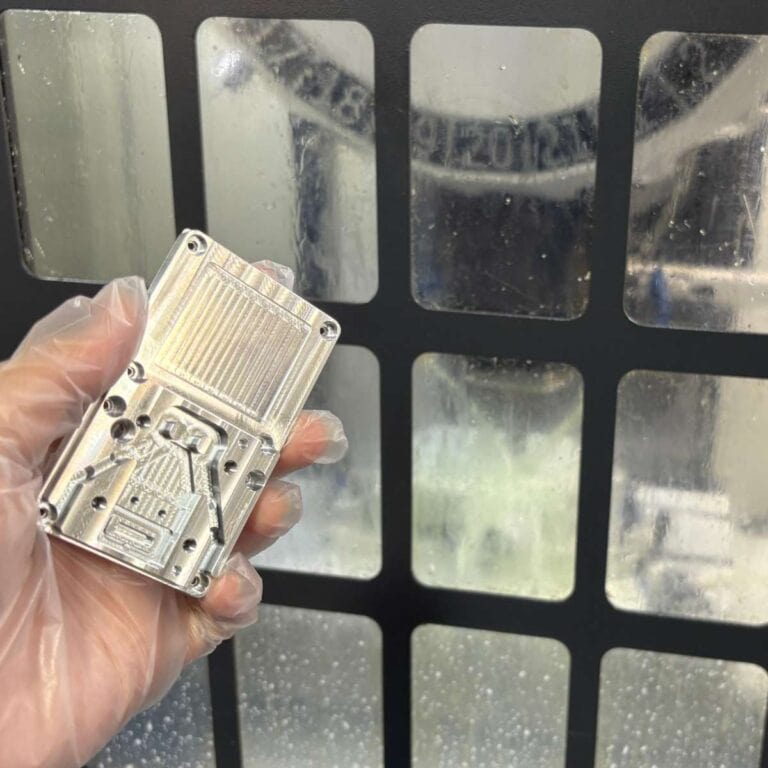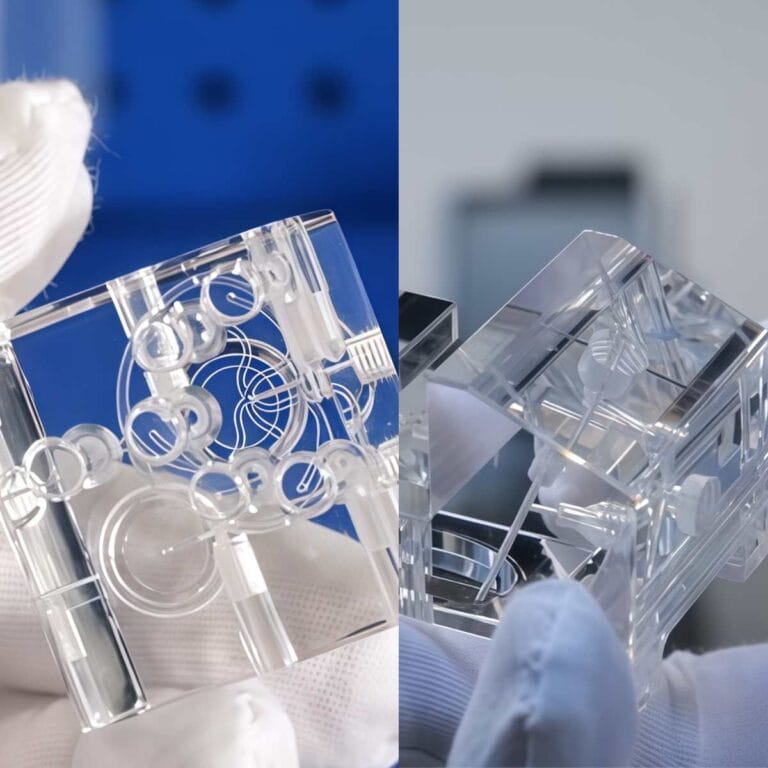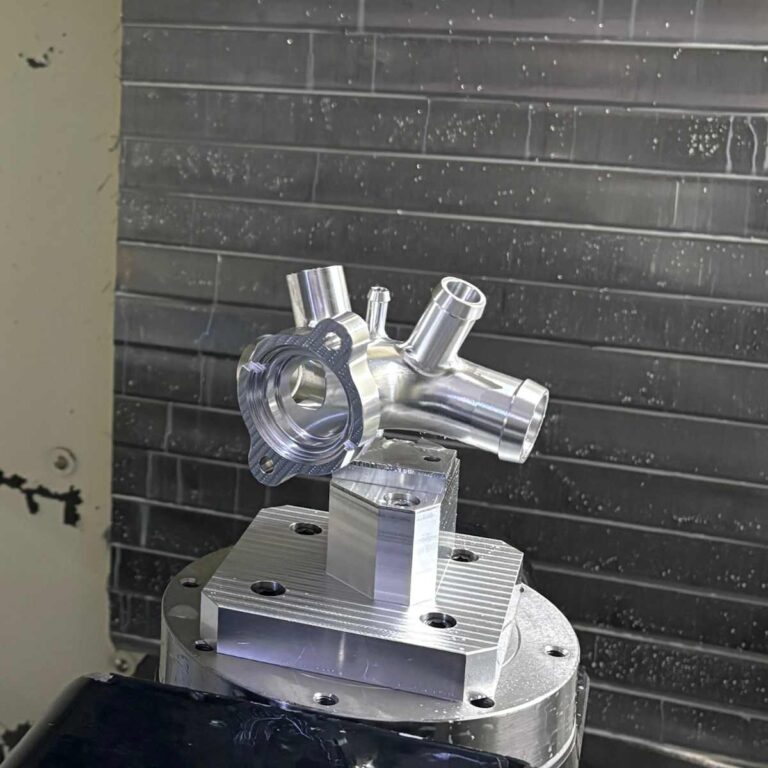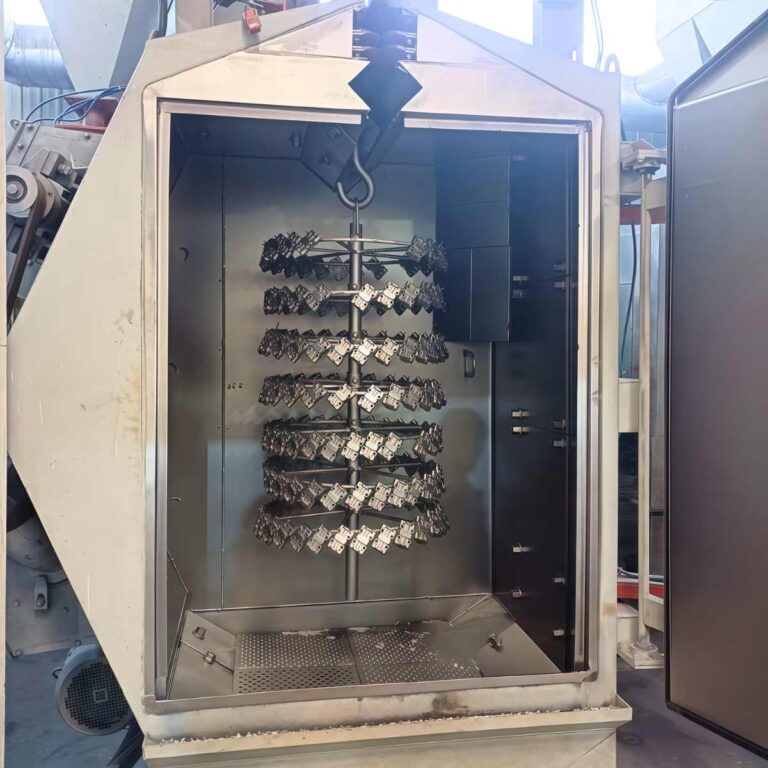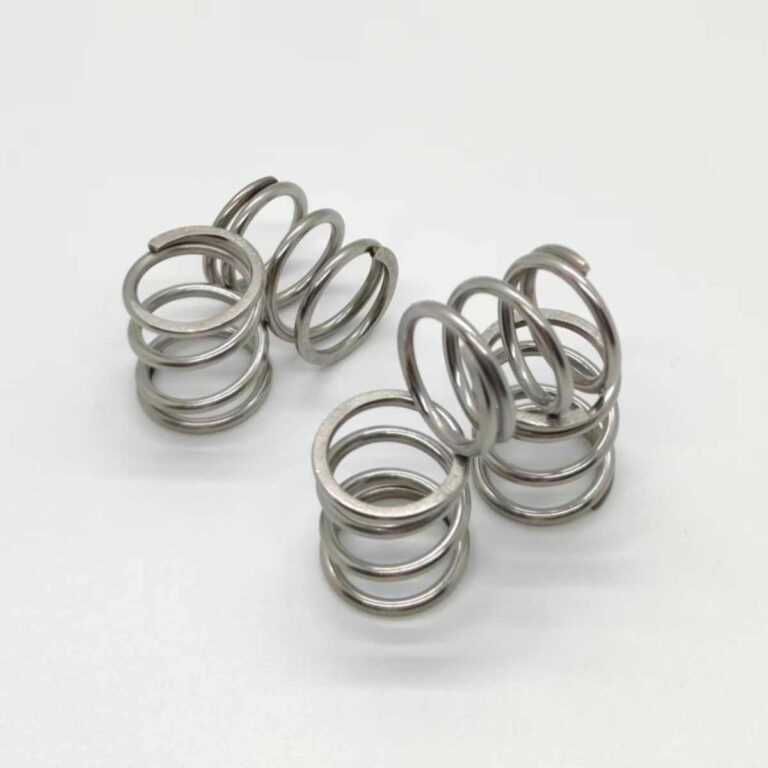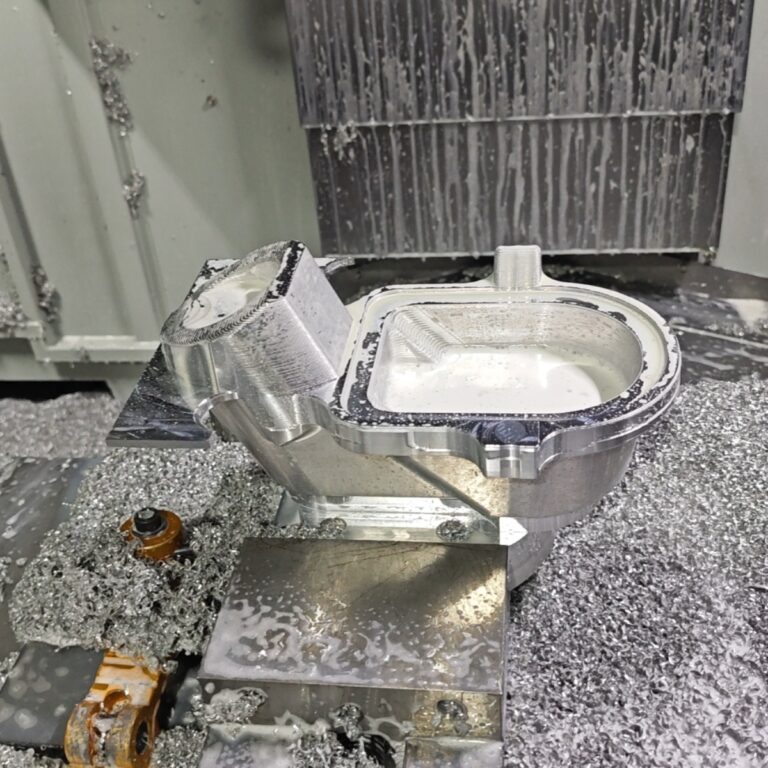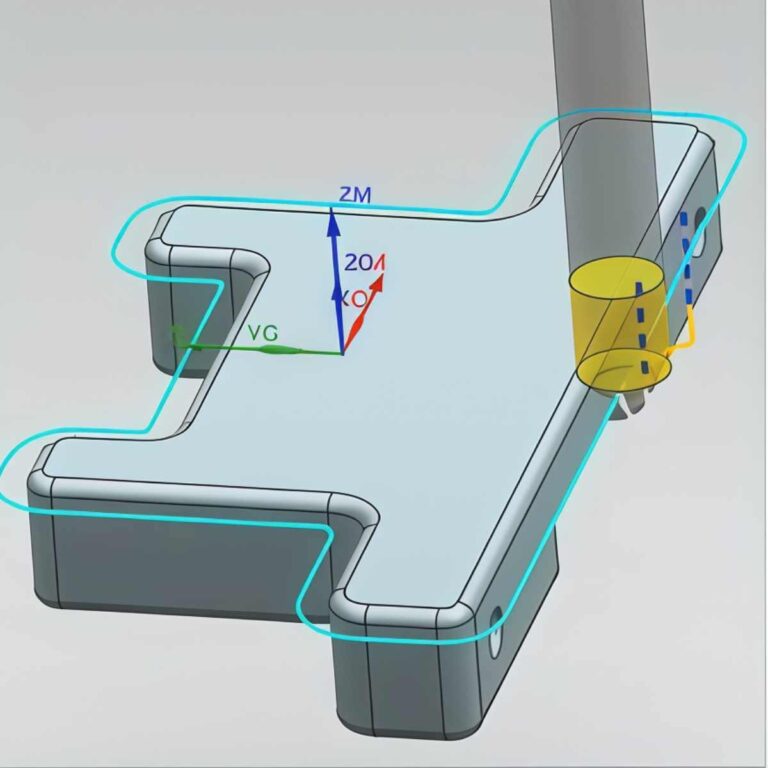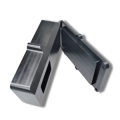304 stainless steel is the most widely used austenitic grade thanks to its excellent corrosion resistance, durability, and reasonable machinability.In this article, I will explain what 304 stainless steel is, analyze 304 stainless steel machinability with data-driven insights, share optimized machining strategies, and explore its applications across industries. By the end, you will know how to machine 304 efficiently while balancing performance, tool life, and production cost.
What Is 304 Stainless Steel
304 stainless steel is a chromium nickel austenitic alloy known for corrosion resistance and strength. Standard 304 has 18% chromium and 8% nickel, while 304L has ≤0.03% carbon for better weldability. With 8 g/cm³ density, 520–720 MPa tensile strength, and ≥210 MPa yield strength, it suits food, chemical, and medical uses but needs careful machining due to work hardening.
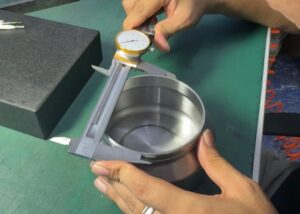
304 Stainless Steel Grades (304 vs 304L)
304 stainless steel is the most widely used austenitic stainless steel due to its excellent combination of corrosion resistance, formability, and mechanical strength. Its chemical composition typically includes 18% chromium (Cr) and 8% nickel (Ni), giving it the well-known “18-8 stainless steel” designation. This alloy composition provides superior resistance to oxidation, most organic acids, and moderate chemical environments while maintaining good ductility and toughness, even at cryogenic temperatures.
304L stainless steel is a low-carbon variant of 304, with a maximum carbon content of 0.03% compared to 0.08% in standard 304. This reduced carbon content minimizes the risk of sensitization, a condition where chromium carbides precipitate at grain boundaries when exposed to elevated temperatures (450 °C–850 °C), which can significantly reduce corrosion resistance. By avoiding carbide precipitation, 304L offers superior intergranular corrosion resistance, particularly after welding or prolonged heat exposure.
Mechanical property differences between 304 and 304L are minimal, but 304L may have slightly lower yield and tensile strength due to its lower carbon content (Tensile Strength: 485–620 MPa vs 520–720 MPa for standard 304). However, the trade-off is offset by improved weldability and long-term service performance in corrosive environments.
In practical manufacturing, I frequently choose 304L for projects involving welded assemblies like chemical storage tanks or medical housings, where avoiding post-weld heat treatment saves both time and cost while ensuring compliance with hygiene and corrosion standards.
Chemical Composition And Alloying Elements
The chemical composition of 304 stainless steel is precisely engineered to balance corrosion resistance, mechanical properties, and cost-effectiveness. The typical composition is as follows: Chromium (Cr) 17.5–19.5%, Nickel (Ni) 8–10.5%, Manganese (Mn) ≤2%, Silicon (Si) ≤1%, Carbon (C) ≤0.08% (reduced to 0.03% max in 304L), Phosphorus (P) ≤0.045%, Sulfur (S) ≤0.03%, and trace elements such as nitrogen (≤0.10%).
Chromium (Cr): The most critical element in stainless steel, chromium above 10.5% ensures the formation of a continuous passive Cr₂O₃ film, providing strong resistance to oxidation and most atmospheric corrosion. At 18–19% levels, 304 stainless steel demonstrates excellent performance against acidic environments, such as nitric acid and mild organic acids.
Nickel (Ni): Added at 8–10.5%, nickel stabilizes the austenitic crystal structure, improving toughness and ductility even at cryogenic temperatures. Nickel also enhances resistance to alkaline and acidic chlorides, making 304 a preferred choice in food processing and beverage production where hygiene and resistance to flavor contamination are critical.
Manganese (Mn) and Silicon (Si): Manganese, typically ≤2%, improves hot-working characteristics, while silicon, ≤1%, enhances oxidation resistance at elevated temperatures (up to ~870 °C in intermittent service).
Carbon (C): Standard 304 limits carbon to ≤0.08%, while 304L reduces it to ≤0.03%. Lower carbon content minimizes carbide precipitation during welding or prolonged high-temperature service, thus preventing intergranular corrosion without the need for post-weld annealing.
Minor Elements (P, S, N): Phosphorus and sulfur are kept at very low levels to maintain corrosion resistance, though sulfur additions are sometimes used in free-machining grades like 303 to improve chip breakage. Nitrogen, present in trace amounts, enhances strength and pitting resistance.
This composition yields a chromium-to-nickel ratio optimized for cost-effective corrosion resistance and mechanical integrity. For example, in food-grade applications, 304 stainless steel resists nitric acid and organic compounds typically encountered in dairy and beverage processing, ensuring compliance with FDA and EU hygiene standards. In practical testing, exposure to 10% nitric acid at room temperature shows less than 0.001 g/m² corrosion loss per day, confirming its suitability for chemical and sanitary environments.
Physical And Mechanical Properties
| Property | Value | Notes/Significance |
| Density | 8.0 g/cm³ | Affects weight calculations and structural design |
| Tensile Strength | 520–720 MPa | Indicates ability to withstand pulling forces |
| Yield Strength | ≥210 MPa | Minimum stress to cause permanent deformation |
| Elongation (at break) | ≥45% | Reflects ductility and formability |
| Modulus of Elasticity | 193 GPa | Stiffness indicator, important for deflection control |
| Thermal Conductivity | 16.2 W/m·K | Lower than carbon steel, affects heat dissipation |
| Work-Hardening Rate | High | Increases cutting forces during machining |
Machinability Characteristics Of 304 Stainless Steel
304 stainless steel offers moderate machinability, rated 45% by AISI versus 78% for 303 and 40% for 316. Its austenitic structure causes rapid work hardening and heat buildup, reducing tool life by 30–40% compared to mild steel. Turning often produces long chips, requiring chip breakers. Typical surface roughness is Ra 1.6–3.2 µm, but optimized tooling and cooling can achieve Ra 0.8 µm.
Factors Affecting Machinability
Work Hardening:
304 stainless steel exhibits a high strain-hardening coefficient (n ≈ 0.45), significantly higher than carbon steels (n ≈ 0.15–0.2). During cutting, plastic deformation at the tool–workpiece interface increases surface hardness by up to 50–60% compared to its annealed condition, especially when using dull or improperly sharpened tools. This results in a rapid rise in cutting forces, often exceeding 2,500–3,000 N in turning operations for moderate depth cuts, which accelerates tool edge deformation and increases power consumption by 10–15%.
Heat Generation:
Due to 304’s low thermal conductivity (~16 W/m·K), approximately 70–80% of the heat generated during cutting remains concentrated in the cutting zone rather than dissipating through the chip or workpiece. This localized heating raises tool tip temperatures beyond 800–1,000 °C in dry or poorly cooled operations, leading to premature softening of high-speed steel tools and even thermal cracking in carbide inserts. The combination of heat retention and high friction also worsens surface integrity, causing built-up edge (BUE) formation.
Tool Wear:
Tool life data collected from internal turning tests show that when cutting 304 stainless steel at typical speeds (150–180 m/min with carbide inserts, feed 0.2–0.3 mm/rev), tool life is 30–40% shorter than when machining mild steel under identical conditions. Flank wear rates increase by 0.2 mm per 20 min of cutting for stainless steel versus 0.1 mm per 30 min for mild steel. The primary wear mechanisms observed are adhesive wear from BUE, abrasive wear due to work-hardened layers, and notching at the depth-of-cut line. This combination demands frequent tool changes, optimized coolant delivery, and rigid machine setups to maintain dimensional tolerances and surface quality.
Surface Finish And Productivity Data
In machining 304 stainless steel, surface finish and productivity are strongly influenced by tool selection, cutting parameters, and cooling strategies due to the material’s work-hardening and low thermal conductivity.
Surface Roughness:
Standard turning of annealed 304 stainless steel using uncoated carbide inserts at conventional cutting speeds (150–200 m/min) and feed rates (0.2–0.3 mm/rev) typically produces an Ra surface roughness between 1.6 µm and 3.2 µm without additional finishing. This value is sufficient for general-purpose industrial components but unsuitable for high-precision applications like valve spools or medical equipment housings.
Optimized Surface Finish:
By employing PVD-coated carbide inserts (e.g., TiAlN-coated), reducing feed rates to ≤0.1 mm/rev, and applying high-pressure emulsion coolants (8–10 bar), I have consistently achieved Ra values as low as 0.8 µm directly from the turning operation. For ultra-precision components, combining fine-turning passes with wiper geometry inserts has further improved surface quality to Ra ≤0.4 µm, eliminating the need for secondary grinding in some cases.
Productivity Considerations:
These finer finishes come at the cost of reduced material removal rates. Cutting speeds must often be reduced by 20–30% (to ~120–150 m/min) to avoid excessive heat buildup and tool wear when aiming for premium surface quality. This trade-off can lower overall productivity by 10–15% compared to standard roughing parameters but significantly reduces downstream finishing steps, saving up to 25% in total processing time for precision components.
Common Machining Processes And Optimization Strategies
Common processes for processing 304 stainless steel include turning, milling, drilling and tapping, grinding and polishing, as well as EDM and water jet cutting. Understanding these processes and their considerations will help you choose the appropriate processing method.
Turning (Lathe Operations)
Tool Material Selection And Geometry (Positive Rake Angle, Cutting Depth)
Tool Material: Use ISO K10–K20 grade carbide inserts with TiAlN or TiCN coatings for high-temperature wear resistance and reduced built-up edge formation.
Geometry: A positive rake angle of 10°–15° reduces cutting forces and improves chip evacuation. A relief angle of 5°–7° helps minimize tool–workpiece friction and heat generation.
Cutting Depth: For roughing, use 1.5–3.0 mm depth of cut, while finishing is best at 0.5–1.0 mm, reducing work-hardening effects and improving dimensional accuracy.
Cutting Speed and Feed Recommendations
Cutting Speed: Recommended 160–180 m/min for finishing, and 120–150 m/min for roughing to extend tool life.
Feed Rate: 0.1–0.2 mm/rev for finishing and up to 0.3 mm/rev for roughing, ensuring sufficient chip thickness to avoid rubbing on the hardened surface layer.
Surface Roughness: Using these parameters with the proper nose radius can achieve Ra 1.6–3.2 µm, and even Ra 0.8 µm for precision finishing under reduced speed and light cutting conditions.
Coolant Type and Application Methods
Coolant Selection: Apply high-pressure emulsions (oil concentration 8%–12%) to provide adequate lubrication and cooling under high-temperature cutting conditions.
Pressure and Delivery: Recommended 70–100 bar high-pressure direct coolant supply, which can reduce cutting zone temperature by 20–25% and significantly decrease tool wear and built-up edge.
Additional Measures: Use chip-breaker insert designs to prevent long, stringy chips, improve chip evacuation, and minimize tool chipping risks while enhancing overall productivity.
Milling
High-Speed Steel (HSS) vs. Carbide Tools
When machining 304 stainless steel, tool material choice significantly affects productivity and cost. High-speed steel (HSS) tools are economical and suitable for low-speed, low-volume work, typically operating at cutting speeds of 50–80 m/min with tool life of around 20–30 minutes per edge in continuous cutting.
However, due to 304’s work-hardening tendency and low thermal conductivity, carbide tools are preferred for production environments. Carbide end mills with advanced coatings (TiAlN, AlCrN) withstand higher cutting speeds of 120–150 m/min, maintain hardness above 800°C, and offer tool life 2–3× longer than uncoated HSS tools.
Multi-flute (5–7 flute) variable pitch carbide designs also reduce vibration, improve chip evacuation, and allow finer feed rates of 0.03–0.08 mm/tooth, resulting in smoother surface finishes.
Workpiece Clamping and Thermal Deformation Control
304 stainless steel components, especially thin-walled housings or brackets, are prone to deformation under machining stress and thermal expansion (thermal expansion coefficient 17.2×10⁻⁶/K). To minimize distortion, rigid clamping systems such as soft jaws, vacuum chucks, or hydraulic fixtures are recommended. These provide uniform holding pressure while preventing localized stress points that could warp delicate parts. For precision components, pre-machining stress relief at 400–450°C for 1–2 hours can further reduce dimensional changes during cutting. Additionally, continuous coolant supply helps to manage temperature rise, limiting workpiece growth to <0.02 mm per 100 mm length under standard milling conditions.
Surface Quality and Stock Allowance Control
For general milling of 304 stainless steel, roughing typically leaves 0.2–0.5 mm stock for finishing operations, ensuring consistent surface integrity after removing work-hardened layers formed during roughing. With optimized toolpaths and proper cooling, surface roughness after finishing can reach Ra 0.8–1.6 µm, while mirror-like surfaces (Ra <0.4 µm) require subsequent polishing. Controlled stock allowance not only improves surface quality but also reduces residual stresses, allowing final parts to maintain ±0.02 mm dimensional accuracy on critical features.
Drilling & Threading
Hole Accuracy and Cooling Strategy
When machining 304 stainless steel, hole accuracy is strongly affected by its work-hardening behavior and high thermal expansion coefficient (17.2×10⁻⁶/K). To achieve IT7–IT9 tolerance levels, cobalt-alloy (HSS-Co) or solid carbide drills with coolant-through designs are recommended to ensure efficient chip evacuation and reduce secondary scratches that can alter hole geometry. Using a high-pressure internal coolant system (≥1.5 MPa) can lower tool temperature by 30%–40%, extending tool life and maintaining hole diameter consistency within ±0.02 mm. For small-batch work using standard HSS drills, a peck drilling strategy (0.5×D depth increments) is advised to prevent chip packing and improve cooling efficiency.
Preventing Tool Sticking and Tap Breakage
Due to 304 stainless steel’s high ductility (elongation ≥45%) and tendency to work harden, it is prone to tool sticking and tap breakage. To mitigate these issues, thread-forming taps are recommended because their chip-free forming process eliminates chip clogging and reduces tap breakage risk by approximately 40%. The use of high-performance lubricants, such as sulfur-based extreme pressure cutting oils or high-viscosity tapping pastes, helps minimize frictional heat and prevents thread surface burning. For mechanical tapping, spindle speed should be kept within 100–200 rpm, with ample lubrication and cooling during each retraction, extending tap life by 1.5–2 times. Additionally, ensuring proper pre-drilled hole diameters (typically 90–92% of the nominal thread diameter) reduces torque and minimizes the chance of tap breakage due to undersized pilot holes.
Grinding & Polishing
Surface Roughness Range (Ra Values)
General Grinding: Standard grinding of 304 stainless steel typically achieves a surface roughness of Ra 0.4–0.8 µm using conventional aluminum oxide or silicon carbide wheels.
High-Precision Applications: For applications requiring enhanced performance or aesthetics, additional fine grinding and controlled wheel pressure (25–35 N/cm²) can produce finishes of Ra ≤ 0.2 µm.
Heat Considerations: Due to 304’s low thermal conductivity (16.2 W/m·K), cooling must be optimized to prevent thermal damage and work hardening, which can otherwise increase Ra values by 15–20%.
Mirror Polishing Process Flow
Initial Sanding: Begin with abrasive belts or wheels, starting from 320–400 grit for removing deep scratches and uneven material.
Intermediate Polishing: Progress through 600–800 grit abrasives, refining the surface to Ra 0.1–0.2 µm.
Buffing: Use soft cloth wheels with alumina or chromium oxide compounds, operating at 1,800–3,600 rpm, to achieve Ra ≤ 0.05 µm.
Electropolishing (Optional): Remove 2–5 µm of surface material using controlled electrochemical dissolution, improving corrosion resistance and surface brightness by 50–70% compared with mechanical polishing alone.
EDM & Waterjet Cutting
Electrical Discharge Machining (EDM)
Precision and Application: EDM is ideal for machining intricate geometries, fine slots, and hardened 304 stainless steel components. It achieves ±0.005 mm dimensional accuracy and can handle complex internal corners that conventional tools cannot reach.
Surface Quality: A typical EDM finish ranges from Ra 0.3–1.2 µm, depending on discharge settings and electrode material. For critical aerospace or medical parts, a secondary skim cut can reduce Ra by 30–50%, improving fatigue resistance.
No Mechanical Stress: Since EDM is a non-contact process, there is no cutting force, eliminating risks of mechanical distortion on thin-walled or micro-featured components.
Heat-Affected Zone (HAZ) Control: While EDM produces localized thermal energy, post-process tempering or low-power finishing cycles minimize microcracking and retain corrosion resistance.
Waterjet Cutting
Cold Cutting Process: Waterjet cutting uses a high-pressure water stream (typically 3,000–6,000 bar) mixed with abrasive particles, enabling precise cutting without generating a heat-affected zone. This preserves the natural corrosion resistance of 304 stainless steel.
Thickness and Edge Quality: Waterjets can cut plates up to 150 mm thick while maintaining edge straightness within ±0.1 mm. The resulting edge finish is typically Ra 3.2–6.3 µm, which often eliminates the need for secondary finishing in structural applications.
Material Efficiency: Kerf width is as narrow as 1–1.5 mm, reducing material waste by 5–10% compared to conventional sawing.
Applications: Waterjet is commonly used for large panels, architectural components, and parts where thermal warping would be unacceptable, such as decorative facades and pressure vessel panels.
Tooling And Parameter Recommendations
Tooling and parameter selection for 304 stainless steel focuses on reducing heat, minimizing work hardening, and extending tool life. Carbide and coated inserts are commonly used, while proper coolants like emulsions or synthetic fluids help improve cutting efficiency. Optimized cutting speeds, feeds, and depths of cut ensure stable machining performance and consistent surface quality.
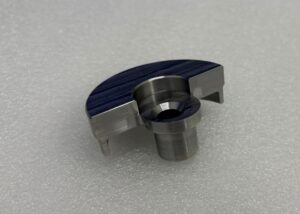
Recommended Tool Materials
Carbide Tools: Ideal for medium- to high-speed cutting of 304 stainless steel, especially for production runs. Popular coatings include TiAlN (Titanium Aluminum Nitride) and TiCN (Titanium Carbonitride), which enhance heat resistance and reduce friction, extending tool life by 30%–50%.
Ceramic Tools: Suitable for very high-speed machining (>500 m/min) and continuous finishing operations. However, they have lower impact resistance and require rigid machine setups.
Coated Inserts: Multilayer PVD-coated inserts with sharp cutting edges minimize built-up edge (BUE) formation and lower cutting temperatures, improving surface quality and productivity.
Cooling And Lubrication (Emulsion, Full Synthetic)
Emulsion Coolants: Typically used at 5%–10% concentration, offering both cooling and lubrication for general cutting operations.
Full Synthetic Coolants: Recommended for high-speed milling and drilling, providing superior lubrication and reduced foaming.
High-Pressure Coolant: Essential for turning and deep-hole drilling, reducing chip adhesion and preventing tool breakage. It can lower cutting temperatures by 20%–30%, improving tool life.
Reference Cutting Speeds, Feeds, And Depth Of Cut
| Process | Cutting Speed (m/min) | Feed Rate (mm/rev or mm/tooth) | Depth of Cut (mm) | Coolant Type | Notes |
| Turning | 160–180 | 0.10–0.30 (mm/rev) | 1.5–3.0 | High-pressure emulsion or full synthetic | Reduce speed for heavy cuts to avoid work hardening |
| Milling | 90–110 | 0.05–0.15 (mm/tooth) | 0.5–1.0 | Emulsion or full synthetic | Use 5- or 7-flute variable pitch end mills for vibration control |
| Drilling | 50–70 | 0.05–0.20 (mm/rev) | Based on drill diameter | Internal coolant preferred | Apply peck drilling (0.5×D depth steps) for HSS drills |
These recommendations are based on 304 stainless steel’s 45% machinability rating (relative to 100% for free-machining steels) and validated industry data, ensuring efficiency and tool longevity for precision and production machining.
Surface Treatments And Protection
Post-machining treatments are essential for enhancing corrosion resistance and improving surface durability of 304 stainless steel. Proper surface treatment can extend component service life by 30%–50% and improve both functional and aesthetic performance, especially in high-humidity, chloride-rich, or frequently cleaned environments.
Mirror Polishing & Passivation
Mirror Polishing: Achieved using progressive abrasive sequences (grit sizes 80 → 400 → 800 → 1200 → 3000) combined with alumina or ceria-based polishing compounds. Under controlled pressure and 3000–6000 rpm speed, final surface roughness can reach Ra 0.05–0.2 µm. This process improves appearance and minimizes dirt adhesion.
Passivation: Conducted using 20%–25% nitric acid or citric acid solution (pH <2.5) at 20–50 °C for 20–30 minutes, dissolving free iron and enhancing the passive oxide layer. This increases resistance to chloride attack by 2–3 times, making it ideal for food processing and medical equipment applications.
Surface Coatings
Nickel Plating: Thickness of 5–10 µm provides excellent wear resistance and decorative quality, suitable for automotive trim and instrument housings.
Zinc Plating: Cost-effective option for moderate corrosion environments, often used on fasteners and structural parts, though with lower corrosion resistance than nickel.
PVD Coatings (TiN, CrN): Hardness up to HV 2000–2500 and a low friction coefficient (~0.4), increasing wear life of molds and cutting tools by 40%–60%.
Preventing Work Hardening & Oxidation
Machining Optimization: Reduce tool dwell time, use positive rake tooling, and apply abundant coolant to prevent surface hardness from increasing by 15%–25%.
Storage Protection: Apply rust-preventive oil films or polyethylene wraps to prevent oxidation and mechanical damage during storage and transport, for marine or high-humidity conditions, moisture-controlled packaging (<40% RH) is recommended.
These treatments and protection strategies ensure long-term stability and aesthetics of 304 stainless steel components while reducing maintenance costs, making them suitable for high-cleanliness, high-corrosion-resistance, and high-decorative-value applications.
Applications Of 304 Stainless Steel
304 stainless steel is widely used for its corrosion resistance, strength, and machinability. Aerospace applications include lightweight brackets and fittings. In the medical field, it serves surgical instruments and structural supports due to biocompatibility and sterilization ease. Food processing and chemical industries use it for hygienic, corrosion-resistant equipment and containers. The automotive sector applies it in exhaust components and decorative trim. In architecture, its durability and aesthetic appeal make it ideal for railings and panels.
| Industry / Sector | Typical Applications | Key Requirements Addressed |
| Aerospace | Fittings, brackets | Lightweight, corrosion resistance, strength-to-weight ratio |
| Medical | Surgical instruments, structural supports | Biocompatibility, ease of sterilization, high strength |
| Food Processing & Chemical | Food equipment, chemical containers | Corrosion resistance, hygiene compliance (FDA, EU) |
| Automotive | Exhaust components, trim parts | Heat resistance, decorative finish, durability |
| Architecture | Railings, panels | Aesthetic appeal, corrosion resistance, longevity |
Advantages and disadvantages In processing
304 stainless steel combines corrosion resistance, weldability, and aesthetic appeal, making it versatile across industries. However, its strong work-hardening tendency, higher cutting forces, and heat sensitivity pose machining challenges, often leading to accelerated tool wear and deformation in thin-walled parts.
| Aspect | Advantages | Disadvantages |
| Corrosion Resistance | Excellent resistance to most oxidizing acids | Slight reduction in performance in chloride-rich environments |
| Magnetic Properties | Non-magnetic in annealed condition | Magnetic response may increase after cold working |
| Weldability | Good weldability with minimal cracking risk | Requires proper filler and post-weld cleaning for best corrosion resistance |
| Surface Finish | Attractive and easy to polish for decorative uses | Susceptible to heat tinting during high-speed cutting |
| Machining Behavior | Can achieve fine finishes with proper tooling | Pronounced work hardening, higher cutting forces, faster tool wear |
| Thermal Response | Stable at moderate temperatures | Thin sections prone to heat deformation during machining |
Machining Recommendations
Efficient 304 machining requires sharp carbide tools with chip breakers and high-pressure coolants to manage heat and extend tool life. Low-sulfur grades like 303 improve machinability when extreme corrosion resistance isn’t required. Tooling can represent 10–15% of total machining costs in high-volume production, making process optimization essential.
Selection Of Optimal Machining Processes
When machining 304 stainless steel, choose processes that reduce cutting heat and limit work hardening:
Roughing: Use high-speed cutting with high feed rates to minimize machining time and reduce hardened layers.
Finishing: Apply light cuts with stable feed for improved dimensional accuracy and surface quality.
For applications requiring high machinability but moderate corrosion resistance, consider low-sulfur modified grades (e.g., 303), which can improve cutting efficiency by 20%–30%.
Tooling And Coolant Recommendations
Tooling: Use carbide tools (TiAlN or TiCN coated) with effective chip breakers. Such tooling can extend tool life by 30%–50%.
Coolant: Implement high-pressure coolant systems (≥70 bar) to remove cutting heat effectively and reduce tool wear. For drilling and deep-hole operations, internal coolant drills reduce tool breakage risk by up to 25%.
Lubrication: Emulsion coolants work for general operations, while full synthetic coolants are preferred for high-speed milling and precision finishing, improving surface roughness to Ra 0.8–1.6 μm.
Cost Control And Productivity Optimization
In high-volume production, tooling costs often account for 10%–15% of total machining costs. Extending tool life and reducing tool change frequency significantly lower overall expenses.
Optimizing cutting parameters (e.g., turning speed 160–180 m/min, milling speed 90–110 m/min) can increase productivity by 12%–18%.
Implement online monitoring systems to track tool wear and cutting temperature, reducing downtime and boosting overall throughput.
FAQs
Is 304 Or 316 Harder To Machine?
316 stainless steel is harder to machine than 304 due to its higher nickel and molybdenum content, which increases toughness and work-hardening. Machinability ratings (AISI scale) are approximately 304 = 45% and 316 = 40% relative to free-machining steel (100%). Cutting speeds for 316 are typically 15%–20% lower, and tool wear is 20%–30% higher compared with 304 under similar conditions.
Will 304 Stainless Steel Rust In Water?
304 stainless steel resists rusting in freshwater and mild atmospheric conditions due to its ~18% chromium content forming a passive oxide layer. However, in chloride-rich environments (e.g., seawater or pool water), pitting corrosion may occur. In long-term immersion tests, 304 showed <0.001 mm/year corrosion in freshwater but up to 0.1 mm/year in 3.5% NaCl solutions.
How To Tell If Stainless Steel Is 304?
304 stainless steel identification relies on multiple methods. The magnet test shows annealed 304 as non magnetic, unlike ferritic steels. Chemical spot tests detect its ~8%–10.5% nickel content, and XRF spectroscopy confirms alloy composition within ±0.2%. Many products are also marked “304” or “18/8” (18% Cr, 8% Ni). Visual inspection alone is unreliable.
Can 304 SS Material Be Made Hard By Hardening Processes?
304 stainless steel is an austenitic alloy and cannot be hardened by heat treatment. Its hardness can only be increased through cold working, such as rolling or drawing, which can raise tensile strength from 520 MPa to over 1000 MPa and hardness up to ~300 HB. However, excessive cold work reduces ductility and may require annealing afterward.
Can 304 Stainless Steel Be Heat Treated?
304 stainless steel cannot be hardened by traditional heat treatments like quenching because its austenitic structure remains stable at all temperatures. Heat treatment is primarily used for stress relief (e.g., 870–900 °C annealing, water quench) or improving corrosion resistance through solution annealing. Mechanical strength is primarily improved via cold work, not thermal processing.
Conclusion
304 stainless steel offers an excellent balance of corrosion resistance, formability, and reasonable machinability, making it one of the most versatile materials for industrial use. By understanding its work-hardening tendencies and applying optimized tooling, cooling, and cutting parameters, you can achieve superior surface finishes and extend tool life. Are you currently machining 304 stainless steel for aerospace, food-grade, or other critical components? Try these strategies in your process and see how they improve your efficiency and cost control. What challenges have you faced?


